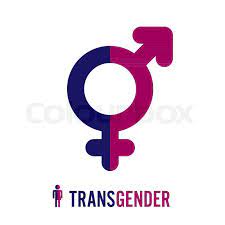Estrogen is often touted as the female hormone, but in reality, it’s a powerhouse that plays critical roles in various bodily functions for all genders. Its influence extends far beyond the reproductive system, affecting everything from bone health to mood. Understanding where estrogen acts in the body—its target tissues—can provide a clearer picture of its significance in overall health. In this article, we will explore the various tissues that respond to estrogen, how this hormone contributes to reproductive health, and its broader impacts on our well-being.
What Is Estrogen and Why Is It Important?
Estrogen is a group of hormones that play a key role in the development and regulation of the female reproductive system and secondary sexual characteristics. Although it is primarily known as a female hormone, men produce estrogen too, albeit in smaller amounts. It is essential for various physiological functions, including menstrual cycle regulation and the maintenance of pregnancy. Importantly, estrogen also has a hand in non-reproductive functions, influencing metabolism, cardiovascular health, and even cognitive function.Does Testosterone Change Your FaceTrans Femme Meaning
The importance of estrogen extends into numerous biological processes, making it critical for maintaining hormonal balance. A deficiency or excess of estrogen can lead to a range of health issues, from osteoporosis to mood disorders. For these reasons, understanding where estrogen interacts with the body is vital for both men and women, especially when considering hormonal therapies or managing conditions related to hormonal imbalances.
Understanding Target Tissues for Estrogen Action
Target tissues for estrogen include any organs or systems that have estrogen receptors and respond to this hormone. The most well-known target is the reproductive system, including the ovaries, uterus, and breasts. However, estrogen receptors are also widely distributed in other parts of the body, such as bone, heart, brain, and even skin. This distribution is crucial because it means that estrogen’s effects are not limited to just reproduction; they span a variety of bodily functions that contribute to overall health.
When estrogen binds to its receptors in these target tissues, it triggers numerous biological responses. For instance, in the uterus, estrogen plays a role in preparing the lining for potential pregnancy, while in bones, it helps regulate the activity of cells that build and break down bone tissue. Understanding these target sites helps researchers and healthcare providers tailor treatments that can improve health outcomes, especially during periods of hormonal change such as menopause.
The Role of Estrogen in Reproductive Health
Estrogen is fundamental to female reproductive health, influencing various stages of the menstrual cycle and preparing the body for pregnancy. During the follicular phase of the cycle, levels of estrogen rise, stimulating the growth of the uterine lining. This preparation is crucial for implantation should fertilization occur. Estrogen also plays a role in regulating ovulation, signaling the ovaries to release an egg, and is involved in the production of other hormones necessary for reproductive function.
Additionally, estrogen has protective roles during pregnancy. It supports the growth of the placenta and helps maintain the uterine environment necessary for fetal development. However, an imbalance—either too little or too much estrogen—can lead to reproductive issues such as irregular cycles, infertility, or conditions like endometriosis. Understanding estrogen’s role in reproductive health is essential for addressing these challenges and supporting women’s health across their lifespan.
How Estrogen Affects Bone Density and Strength
One of the lesser-known yet crucial roles of estrogen is in maintaining bone density and strength. Estrogen helps regulate the activity of osteoclasts, the cells responsible for breaking down bone tissue. When estrogen levels are adequate, osteoclast activity is kept in check, promoting a balance between bone formation and resorption. This is particularly important for postmenopausal women, as a decline in estrogen levels can lead to accelerated bone loss, increasing the risk of osteoporosis.
Moreover, studies have shown that estrogen can enhance the absorption of calcium in the intestines, further supporting bone health. This relationship underscores the importance of monitoring hormonal health, especially as individuals age. Ensuring adequate estrogen levels can help maintain bone density, reduce fracture risks, and contribute to overall skeletal health.
Estrogen’s Impact on the Heart and Blood Vessels
Estrogen is often regarded as cardioprotective, particularly in premenopausal women. It helps maintain healthy blood vessels, promoting elasticity and reducing the risk of atherosclerosis—the buildup of plaque in the arteries. Estrogen also has favorable effects on cholesterol levels, often helping to increase HDL (good cholesterol) while lowering LDL (bad cholesterol). This balance is essential for heart health and reducing cardiovascular disease risk.
However, the dynamics change after menopause when estrogen levels drop. This decline can lead to an increase in cardiovascular risks, highlighting the importance of estrogen in protecting heart health throughout a woman’s life. Understanding how estrogen interacts with the cardiovascular system is crucial for developing strategies to mitigate these risks and promote heart health in aging populations.
The Brain: Estrogen’s Influence on Mood and Cognition
Estrogen’s effects on the brain are profound, influencing mood, cognition, and even memory. The presence of estrogen receptors in various brain regions suggests that this hormone plays a role in regulating neurotransmitters, which can affect mood and emotional responses. Fluctuations in estrogen levels, such as those experienced during the menstrual cycle or menopause, can lead to mood swings and increased risk of mental health conditions like depression and anxiety.
Research also indicates that estrogen may enhance cognitive function, particularly in areas related to verbal memory and executive function. This is why many experts emphasize the importance of maintaining hormonal balance, especially for women experiencing hormonal changes. Addressing estrogen levels can act as a vital component in managing cognitive health and emotional well-being as one ages.
Estrogen and Its Effects on Skin and Hair Health
Estrogen plays a significant role in maintaining skin and hair health, which is often overlooked. In the skin, estrogen helps to maintain moisture, elasticity, and thickness by promoting collagen production. This is why many women notice changes in their skin texture and appearance during menopause when estrogen levels decline. Lack of estrogen can lead to dryness, thinning, and increased wrinkles, prompting many to seek treatments that can help restore this hormonal balance.
Hair health is another area impacted by estrogen, as it influences hair growth cycles. Higher estrogen levels are associated with longer growth phases and less hair loss. Conversely, a decrease in hormone levels can lead to thinning hair and increased shedding. Understanding how estrogen contributes to skin and hair health can provide insights into effective beauty and wellness routines tailored to hormonal changes.
Why Target Tissues Matter for Hormonal Balance
The concept of target tissues is essential for understanding hormonal balance as it relates to health and well-being. Different tissues respond to estrogen in various ways, meaning that imbalances or dysfunction in one area can have far-reaching effects on overall health. For instance, low estrogen levels not only impact reproductive health but can also lead to bone density loss, cardiovascular risks, mood changes, and skin aging.
Focusing on the target tissues of estrogen allows for more tailored approaches to treatment and wellness. Hormonal therapies, lifestyle changes, and dietary adjustments can be designed with these target tissues in mind, leading to better health outcomes. By recognizing the interconnectedness of these systems, individuals can take proactive steps to maintain hormonal balance and enhance their quality of life.
In conclusion, estrogen is more than just a hormone associated with reproduction; it plays multifaceted roles across various target tissues in the body. From reproductive health to cardiovascular well-being, bone density, cognitive function, and skin health, estrogen impacts numerous aspects of our lives. Understanding these target tissues is vital for maintaining hormonal balance and addressing health issues that may arise due to hormonal fluctuations. As we continue to learn more about estrogen and its effects, we can harness this knowledge for better health management and improved quality of life.


